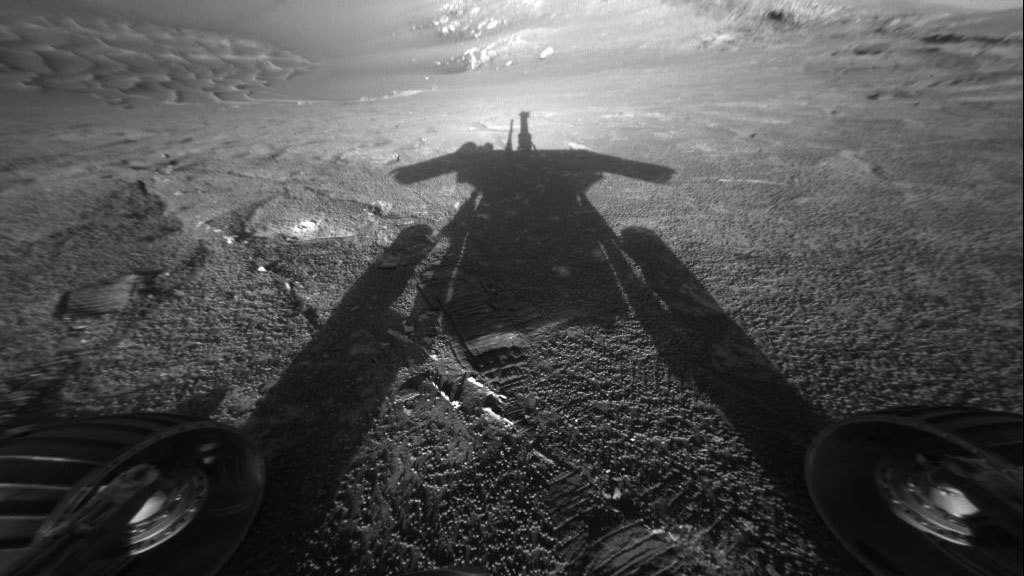
The piece of metal with the American flag on it in this image of a NASA rover on Mars is made of aluminum recovered from the site of the World Trade Center towers in the weeks after their destruction. Image credit: NASA/JPL-Caltech/Cornell University
In September 2001, Honeybee Robotics employees in lower Manhattan were building a pair of tools for grinding weathered rinds off rocks on Mars, so that scientific instruments on NASA’s Mars Exploration Rovers Spirit and Opportunity could inspect the rocks’ interiors.
That month’s attack on the twin towers of the World Trade Center, less than a mile away, shook the lives of the employees and millions of others.
Work on the rock abrasion tools needed to meet a tight schedule to allow thorough testing before launch dates governed by the motions of the planets. The people building the tools could not spend much time helping at shelters or in other ways to cope with the life-changing tragedy of Sept. 11. However, they did find a special way to pay tribute to the thousands of victims who perished in the attack.
An aluminum cuff serving as a cable shield on each of the rock abrasion tools on Mars was made from aluminum recovered from the destroyed World Trade Center towers. The metal bears the image of an American flag and fills a renewed purpose as part of solar system exploration.
Honeybee Robotics collaborated with the New York mayor’s office; a metal-working shop in Round Rock, Texas; NASA’s Jet Propulsion Laboratory in Pasadena, Calif.; and the rover missions’ science leader, Steve Squyres, at Cornell University, Ithaca, N.Y.
“It’s gratifying knowing that a piece of the World Trade Center is up there on Mars. That shield on Mars, to me, contrasts the destructive nature of the attackers with the ingenuity and hopeful attitude of Americans,” said Stephen Gorevan, Honeybee founder and chairman, and a member of the Mars rover science team.











